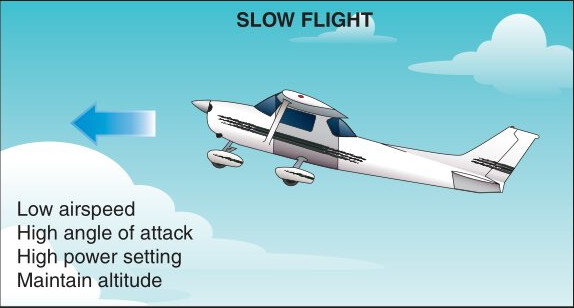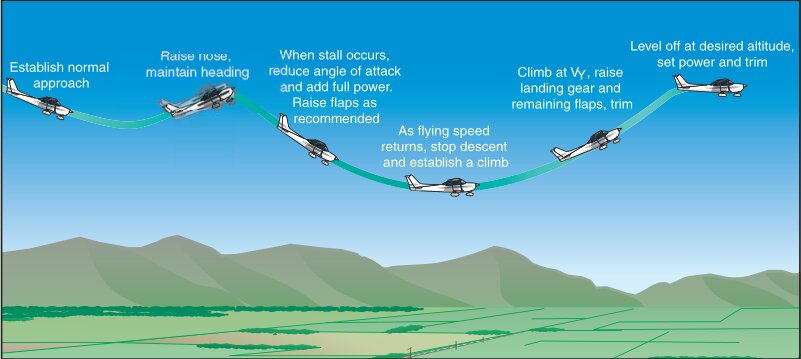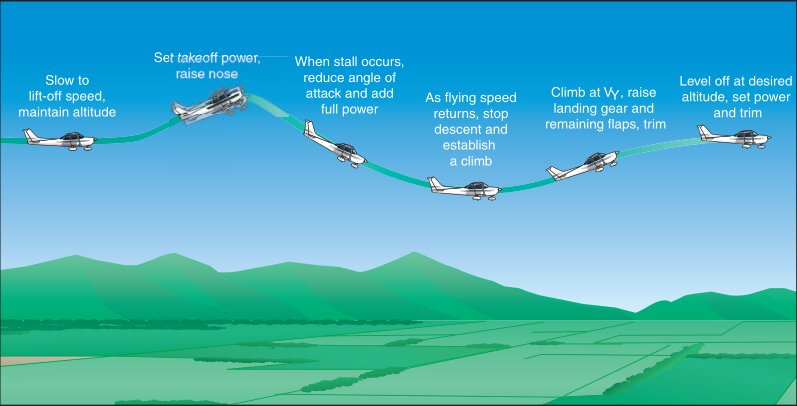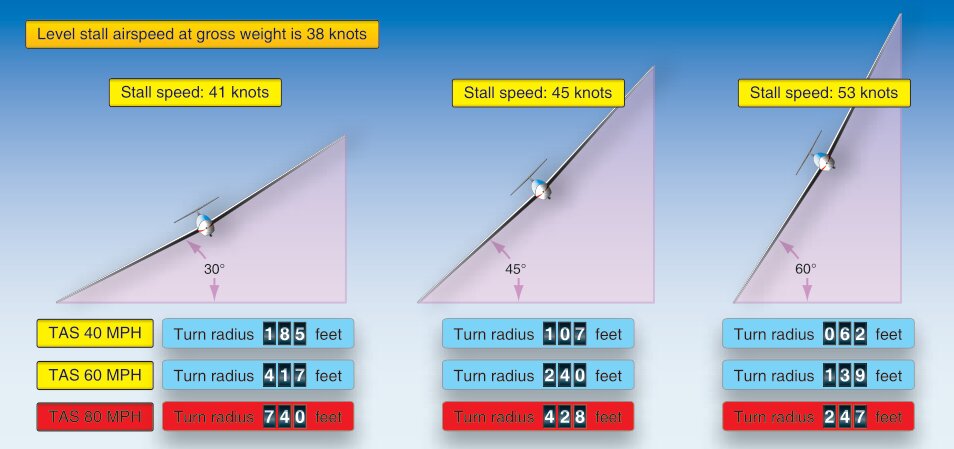Slow Flight
Slow flight is described as flight at the minimum controllable airspeed of an aircraft. When done properly, the airplane will be in a state of equilibrium between its three primary sources of energy: engine power, altitude, and airspeed.

In a Cessna 172, try it like this:
- 2000 RPM
- Full flaps (white arc)
- Airspeed - 45-50 kts (in C172)
- Airplane will have mushy controls, make slow, steady movements
Stalls
So what happens if we try to go slower than "slow" flight? You will stall the aircraft. Now, that's not the terribly scary-sounding word you hear about aircraft in the media. It simply means that one or more of the airfoils on the aircraft stops producing lift (or produces less of it).
A stall will be characterized by:
- High angle of attack
- Buffeting - a slight shaking of the aircraft
- Activation of a stall horn or light
- Loss of lift or a drop in the nose of the aircraft
More accurately, a stall occurs when an airfoil exceeds its "critical angle of attack". The angle of attack is the angle between the chord line of the wing and the relative wind. See below.

Power Off Stalls

In a Cessna 172 try:
- Full flaps
- Power to idle
- Pull back SLOWLY until you feel buffet and nose breaks downward
- RECOVERY:
- Lower nose
- Full power
- First notch of flaps
- Flaps to cruise
Power On Stalls

In a Cessna 172 try this:
- Slow to 55 knots
- Full power and RIGHT RUDDER! (Discuss spin awareness)
- Pull back SLOWLY until buffet and nose breaks downward
- RECOVERY:
- Lower nose
Stall Speed vs Angle of Bank
Of course, we also need to be aware that the stall speed of an airplane is a function of the load factor on the aircraft. The higher the load factor, the higher the stall speed.
When does load factor increase? When you pull back on the stick, and/or when you turn. See below for stall speeds of a airplane in various angle of bank:

Common Mistakes
- Losing altitude during slowflight
- Excessive altitude lost during stall recovery
- Improper airspeed control during slowflight
- Secondary stalls
- Insufficient right rudder during power-on stalls or power-off stall recovery
- Lifting flaps from full to cruise in power-off stall recovery
- Beginning slow flight or stalls below 1500 AGL
- General nervousness and hilarity on first time radio calls :)
ACS Testing Objectives
Pilot exibits knowledge of stalls and their recovery. Standards:
- Altitude +/- 100 ft
- Heading +/- 10°
- Airspeed +/- 10 knots
- Specified angle of bank +/- 10°
- Selects entry altitude which allows task to be completed no lower than 1500 AGL